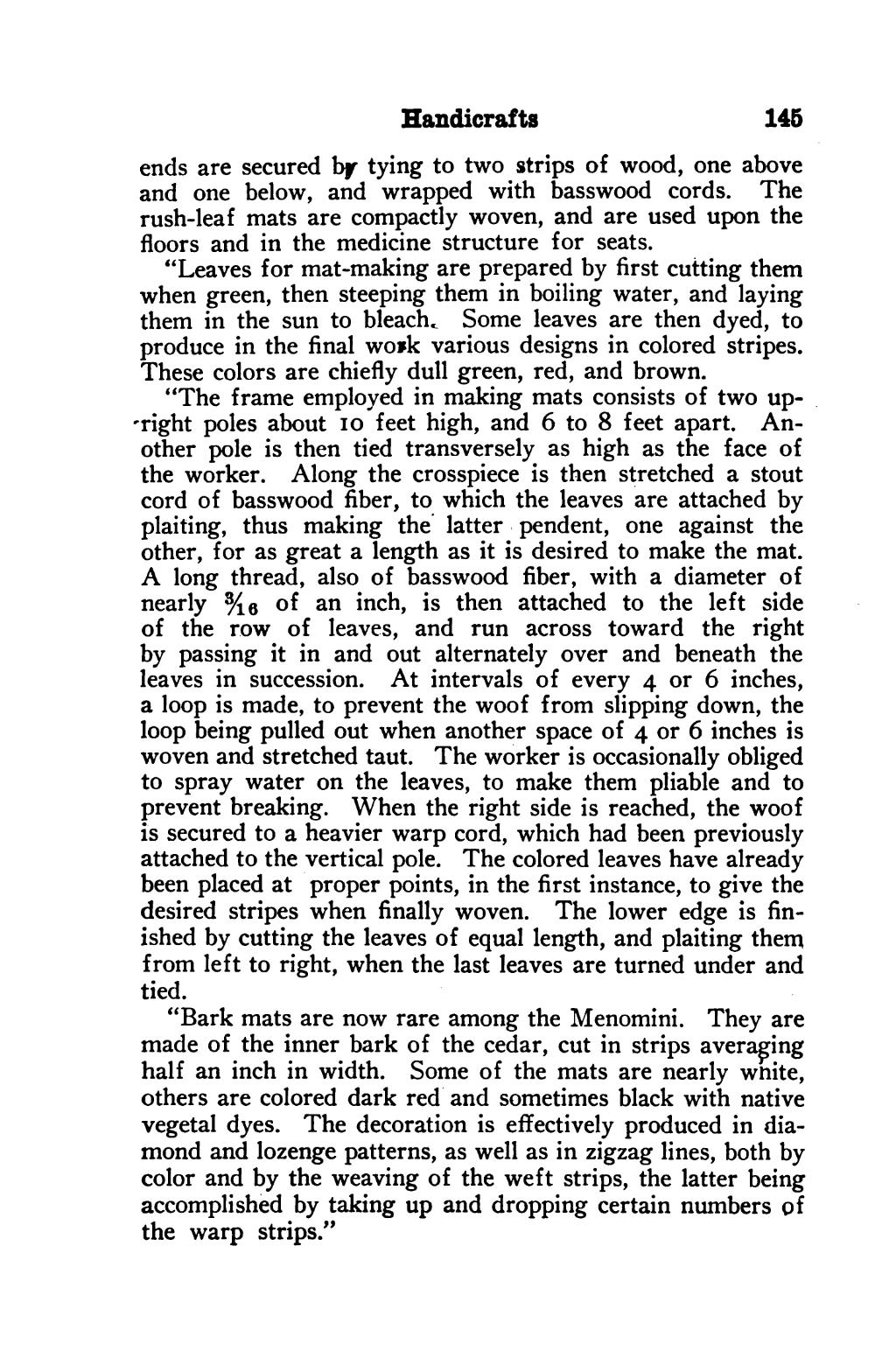Handicrafts 145 ends are secured by tying to two strips of wood, one above and one below, and wrapped with basswood cords. The rush-leaf mats are compactly woven, and are used upon the floors and in the medicine structure for seats. “Leaves for mat-making are prepared by first cutting them when green, then steeping them in boiling water, and laying them in the sun to bleach. Some leaves are then dyed, to produce in the final wosk various designs in colored stripes. These colors are chiefly dull green, red, and brown. ‘“‘The frame employed in making mats consists of two up- ‘right poles about 10 feet high, and 6 to 8 feet apart. An- other pole is then tied transversely as high as the face of the worker. Along the crosspiece is then stretched a stout cord of basswood fiber, to which the leaves are attached by plaiting, thus making the latter pendent, one against the other, for as great a length as it is desired to make the mat. A long thread, also of basswood fiber, with a diameter of nearly %, of an inch, is then attached to the left side of the row of leaves, and run across toward the right by passing it in and out alternately over and beneath the leaves in succession. At intervals of every 4 or 6 inches, a loop is made, to prevent the woof from slipping down, the loop being pulled out when another space of 4 or 6 inches is woven and stretched taut. The worker is occasionally obliged to spray water on the leaves, to make them pliable and to prevent breaking. When the right side is reached, the woof is secured to a heavier warp cord, which had been previously attached to the vertical pole. The colored leaves have already been placed at proper points, in the first instance, to give the desired stripes when finally woven. The lower edge is fin- ished by cutting the leaves of equal length, and plaiting them from left to right, when the last leaves are turned under and tied. | | “Bark mats are now rare among the Menomini. They are made of the inner bark of the cedar, cut in strips averaging half an inch in width. Some of the mats are nearly white, others are colored dark red and sometimes black with native vegetal dyes. The decoration is effectively produced in dia- mond and lozenge patterns, as well as in zigzag lines, both by color and by the weaving of the weft strips, the latter being accomplished by taking up and dropping certain numbers of the warp strips.”
Stránka:roll 1931.djvu/161
Z thewoodcraft.org
Tato stránka nebyla zkontrolována
